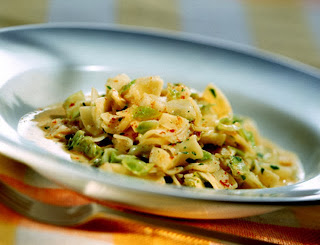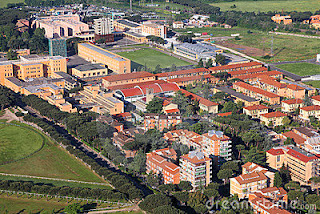The town of Civitavecchia , which means “Ancient
City ” in Italian, is squeezed like a
seaport sandwich between the blue-green Tyrrhenian Sea
and the stubby brown hills to the north. Most of the architecture is
nondescript and vaguely institutional.
As our
cruise ship docked in Civitavecchia
As I
viewed the city coming to life on a cloudy Tuesday morning, I was drawn to a
massive brown fort at the water’s edge. Forte Michelangelo (Michelangelo’s
Fort) was constructed to defend the port
of Rome
It
would have been nice to tour the fort and the rest of the old town – several of our
cruise buddies did just that – but we were off to Rome Florence
So, we
signed up for yet another Royal Caribbean shore excursion called Panoramic
Rome, departing at 9:15, lasting five hours, and costing $75 per person.
Overview: Enjoy the beauty of theEternal
City during a narrated drive that
takes in some of the most impressive and famous monuments in Rome Rome
Overview: Enjoy the beauty of the
Highlights:
-Photo opportunities from the coach include: Aurelian Walls, Circus Maximus, Colosseum, Roman Forum, Arch of
-St. Peter’s Square: Enjoy 45 minutes free time
Full Description:
Those who prefer a less strenuous adventure, with little walking, can still realize their dream of seeing one of the world’s most historical metropolitan areas. You’ll enjoy a taste of
You will arrive at the St. Peter’s Basilica area where you will have approximately 45 minutes of free time to stroll around the famous St. Peter’s Square, or, time permitting, to independently explore the largest basilica in the world. At the appointed time, return to the meeting place and follow your guide to your coach for the return drive to your ship.
Taking
this tour turned out to be a big mistake, primarily because it was really
nothing more than a long bus ride with a brief stop at Vatican City Florence Rome
Our
guide for the day was the very perky Maria, and once again, we had a full bus
load of grey hairs. Getting out of town was like winding through a rat maze
because we had to do an end run around Civitavecchia
The
drive through the hills outside of Civitavecchia
Most of
the housing in Civitavecchia
I
immediately noticed all the satellite TV dishes. It turns out there is
virtually no cable in Italy Italy Italy Spain
As we followed the
Let’s start with the fact that most men and women live with their parents until 40 – even married couples – especially married couples. This is because the cost of housing is so expensive in relation to wages. So, young adults live at home and save their money in order to buy a house. Once they buy their own home, they still don’t move away from mom and dad, but rather, end up renting their place in order to pay the mortgage.

The average Italian eats two cooked meals a day. And pasta is an integral part of their diet. They eat about ten pasta meals a week. But pasta is an appetizer. The entrée is usually some sort of meat or fish dish. Then it’s time for the salad, followed by dessert. Everyone, including the kids, drinks wine with their meal. A five liter bottle of wine at a local winery – not the liquor store – goes for about 1€. That’s more than a gallon of vino for less than $2!
If you
want to see the power of food in Italy
And
just like in America , where
each state gets its biggest chunk of tax revenue from one primary source – in Maryland it’s through income tax, and in New Jersey it’s the property tax – Italy Italy
Italian
kids go to school from 8-1. School is totally free until a child turns 11, and
then they charge 400€ for books each year. And you have to go to school until
you’re 16. It’s the law.

As you travel around the globe, it's pretty obvious that America Europe and the world.
It may only be so everyone can watch our movies without subtitles, but
English is the lingua franca.

When
school is over in the early afternoon, Italian school kids usually go to
grandma’s house because their parents are working. They eat a big lunch and
then do their homework, followed by organized sports, which are not affiliated
with the schools, but rather, run by clubs and associations that charge a fee.
Dinner with the parents is around 8, and that’s when the family bonds. There is
no putting the kids to bed early; everyone goes to bed at 11.

Italian kids have to go to school on Saturday, and then on Sunday they do church, followed by a big dinner at each of the in-laws. So they basically end up eating and drinking all day.
If you wonder why the Italians are so uniformly Catholic, you need only look at their school system. Kids get red crosses for going to the church so it is ingrained in their society and there is tremendous pressure – both institutional and cultural – to get with the Papist program. It’s essentially the national religion.
And
lest you presume that it’s all just harmless genuflecting and fun, only one
public hospital in 
Italian kids have to go to school on Saturday, and then on Sunday they do church, followed by a big dinner at each of the in-laws. So they basically end up eating and drinking all day.
If you wonder why the Italians are so uniformly Catholic, you need only look at their school system. Kids get red crosses for going to the church so it is ingrained in their society and there is tremendous pressure – both institutional and cultural – to get with the Papist program. It’s essentially the national religion.
I find
this interesting for a couple of reasons. First off, the non-ecclesiastical
derivation of the word catholic is:
liberal or inclusive. Those two words seem to be the very antithesis of how I
view the present day Catholic religion. The second thing I find amusing about
all this is that my home state of Maryland Maryland Italy , the
Catholic pull is still going strong in the Free State
Driving
has become one of the biggest social problems these days in Italy
As in
most of Europe , everyone can go to public
university if they have the grades, and the average cost is about 1200€ a year.
That, of course just covers the tuition. Higher education is fraught with
hidden costs no matter where you call home, but it’s still a lot cheaper to get
a college degree from a major Italian university than at an American community
college.
We tend to think of
Another
popular phrase you often hear around Italy
refers to the “seven hills of Rome Rome
Traffic coming into the city is terrible – rivaling LA orNew York
Traffic coming into the city is terrible – rivaling LA or
Scooters
rule in Rome Rome are the smallest economy cars in the U.S. – Golfs and Civics. America
Rome is
500 square miles and the Vatican, sitting atop the highest point in the city at
354 feet, is the smallest sovereign nation on earth – a mere 110 acres, with a
permanent population of 1,000 people. Vatican
City St Paul Vatican history aint pretty.
Tourism
is big business at the Vatican
Visitation
to the Vatican Vatican priests’
fancy Porsche’s, mothballed the Pope Mobile, and every Wednesday he ventures into St.
Peter’s Square to mingle with the great unwashed.
TheTiber River
– Italy ’s second longest
river at 300 miles long – sluggishly winds around the eastern perimeter of the Holy City St. Angelo Bridge
The
It is
this sort of historic tidbit that invariably assaults your senses as you walk
around Vatican City Vatican City
There
are signs posted at the entrance to the Vatican
stating: If you plan to visit St. Peter's Basilica, please note that
strict dress codes are enforced. Short pants, tank tops and revealing clothing
are not acceptable. When I saw this warning I broke out laughing. I
mean, how pretentious and hypocritical that the Catholic Church, which is infamous
the world over for its priests being sexual predators – primarily of little
boys – has the audacity to require that visitors to the Vatican
And
speaking of irony, the first people who lived along the Tiber
were Jews and Greeks because that was the nastiest, most polluted place to
live. Now the Jewish Quarter is the most expensive real estate in town, at $2
million for a 1,000 square feet apartment.
The
economy of the Vatican
Visiting the Holy See is like the Catholic version of the pilgrimage toMecca Vatican
It is wall-to-wall tourons from all over the world almost everywhere you go inside the looming walls ofVatican
City Spain
Visiting the Holy See is like the Catholic version of the pilgrimage to
It is wall-to-wall tourons from all over the world almost everywhere you go inside the looming walls of
The
audio backdrop to the controlled chaos of St. Peters Square
After
about an hour of snapping pictures, checking out the religious trinkets, and
basking in the truly spectacular architectural beauty, it was time to head back
into the mountain and board our bus for a whirlwind drive around Rome
Ah
well, live and learn. Rome isn’t like Florence or Venice
One day
soon, we will return. And the next time we will give ourselves at least a week
and do it right.
Next Stop – Salerno




























































